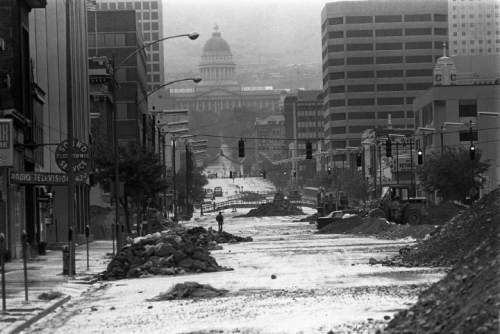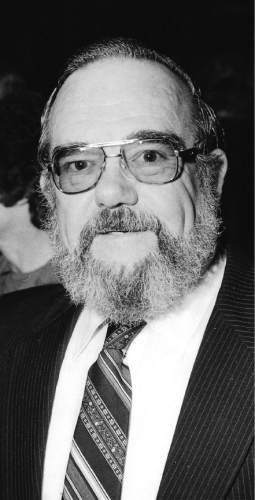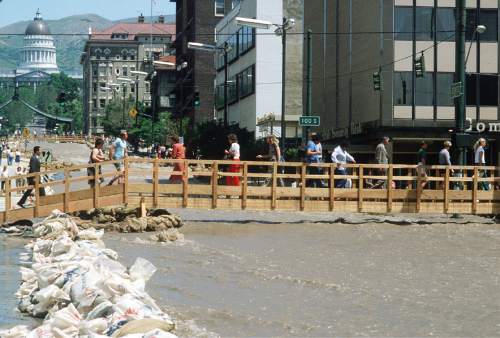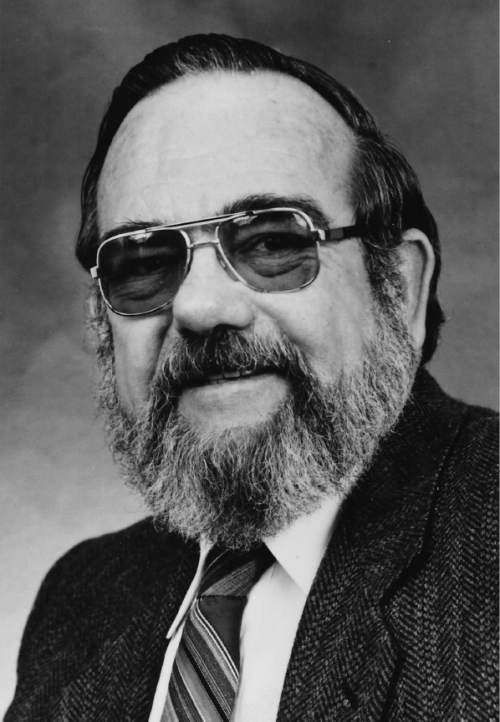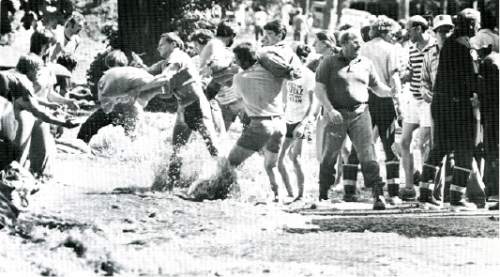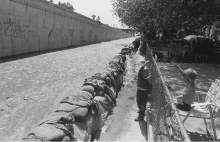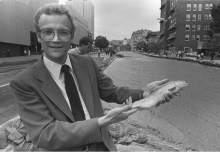This is an archived article that was published on sltrib.com in 2015, and information in the article may be outdated. It is provided only for personal research purposes and may not be reprinted.
Two men who helped steer Salt Lake County through its last period of torrential floods have passed away during this remarkably dry winter.
Services are taking place at 10:30 a.m. Saturday at Redwood Memorial Mortuary in West Jordan for the better-known of the two, Terry Holzworth, who died Jan. 29 in Herriman at the age of 77.
For many Utahns of the mid-1980s, Holzworth was the bearded face of the floods.
Then the county's flood-control director, he seemed to be everywhere during the deluge of 1983 — when a downtown stretch of State Street was converted into a river and thousands of Utahns joined volunteer sandbag brigades. In 1984, runoff was even greater, but the damage was far less because of more than $34 million worth of flood-control improvements installed during the intervening summer.
Much of the job of identifying what needed to be done and finishing the work on time fell to Neil Stack, one of his colleagues (along with Don Spencer and Dave Lovell) who did the fieldwork while Holzworth made the rounds with elected officials, government agencies and the news media, keeping everyone updated.
"Neil was an unsung hero," former County Commissioner Bart Barker said of Stack, 67, who died Dec. 27, a day after learning he had acute leukemia. "He made the response happen. He made sure boots were on the ground and equipment was where it needed to be."
Barker also credited Stack with having the foresight to acquire thousands of sandbags after the "Century Storm" of late September 1982 caused more than $14 million damage to 2,000 homes in the county — and served as a harbinger of what was to come.
"All those sandbags along State Street wouldn't have been there without the vision of these guys," said Barker, now an administrative assistant to County Council Chairman Richard Snelgrove. "We were ready because people like Terry, Neil and Don planned ahead. They didn't know what was going to happen, but they wanted to be prepared."
Holzworth was well-suited to getting agencies to pull together to deal with nature's onslaught, Barker said.
He knew a lot of players in the local water world, having come to the county after nine years as an engineer with what is now called the Jordan Valley Water Conservancy District.
And he seemed as comfortable addressing federal and state officials about flooding prospects as he did providing pithy updates for reporters — sometimes several times a day — whereever the action was.
"We may be water-skiing in Murray Park on the Fourth of July," Holzworth quipped one late June day in 1983 when yet another snowmelt surge sent Little Cottonwood Creekout of its already overflowing banks.
"Terry was energetic, he was optimistic," Barker recalled. "He was considered the go-to guy countywide by pretty much every city on flood-control issues and he was good at dealing with FEMA [Federal Emergency Management Agency] and the state."
After leaving the county, Holzworth later worked with the Central Utah Water Conservancy District, taking on another simple task. The assignment? Negotiating complicated water agreements with American Indian tribes in the Uinta Basin.
Twitter: @sltrib.com —
In memoriam
Another prominent figure from Utah's flood era who died this winter was Ted Arnow, 93, who became one of the leading authorities on the Great Salt Lake during a 40-year career with the U.S. Geological Survey. For his work during the flood years, the U.S. Department of the Interior gave him its meritorious service award.
Arnow died Dec. 18, four days after his wife, Lois Goodell Arnow, also 93. She was a noted scholar in her own right. A botanist, her textbook "Flora of the Central Wasatch Front" has been used for years in University of Utah classes.



